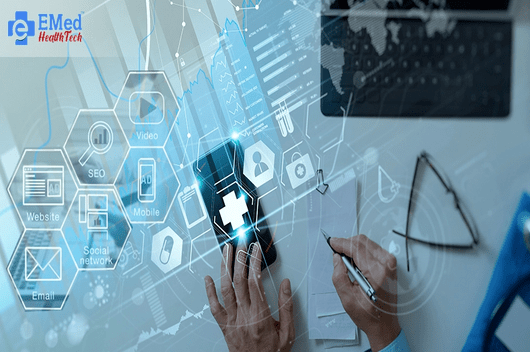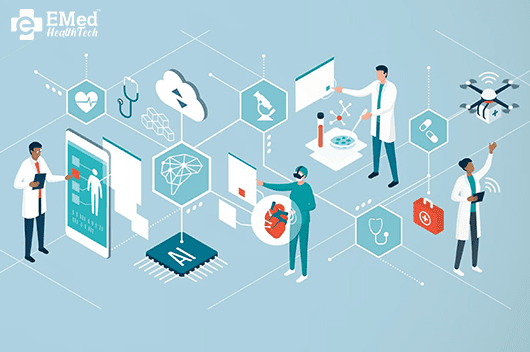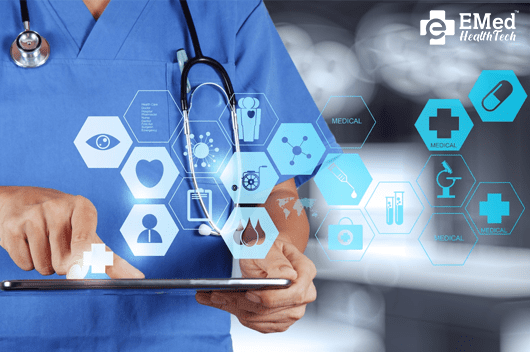Introduction:
The wide adoption of eCommerce platforms has opened many avenues for conducting cost-effective targeted outreach to potential clients. And that is why more and more businesses are now moving towards online mode and doing digital marketing activities to leverage it.
The Healthcare sector is no exception to that. Because, having an online presence of your business not only ensures more visibility on SERPs, but it also means higher engagement with your patients regularly. You also have a very good chance of promoting your products, in case you have a pharmacy store, or your practices and services in case you have a clinic. Essentially, you can improve your revenue stream easily by going online. Want to know how?
Digital healthcare is such a lucrative field that, In 2021, healthcare digital ad spending is set to overtake that of TV ads, and it will be 46% of total healthcare ad spending.
We know that attracting new customers is a major challenge in every business, but it is even more challenging in the healthcare industry as people prefer to consult the doctor they know beforehand. So, attracting new patients to your clinic is a demanding task. However, if you do proper marketing of your healthcare website, it can prove to be a rewarding task and can carry many benefits.
Now the question that arises is how to do proper marketing of your healthcare website?
Do you know more than 75% of users do not scroll past the first page of Google search? This makes it essential to rank your website on the first page of various search engine providers. For this, you need to make sure your potential clients can find your products or services when they search for healthcare-related products or platforms.
Types of Healthcare Digital Marketing:
Digital marketing of healthcare platforms can be of many times. And it is necessary to choose the method that works for you. For that, you need to have a clear understanding of your patients or buyers and design your marketing campaign accordingly.
Search Engine Optimization (SEO):
Search Engine Optimization is integral to any type of digital marketing as it helps brands attain organic growth. Ranking the right keywords ensures higher visibility and brand recognition. It also helps in outranking your competitors. In simpler words, this means that healthcare platforms can increase traffic to their website by properly targeting their keyword.
To ensure your patients can find you when they search on the web, the most fundamental step of any SEO activity is to do keyword research and to optimize websites for your patients’ queries.
Let’s take an example to understand it better. If you are a dentist, you can optimize your website for dentist-related keywords like “dental services” or “root canal operations” etc., and rank your page higher on the SERPs so whenever your prospective clients search for those terms, your website will be shown to them easily.
Healthcare SEO can be of many types. Let us briefly go through all of them.
- On-Page SEO:
Website SEO Onsite Optimization: It deals with Title tags, Metadata, H1 tags, and Image tags of your products that you list on the website.
Content Optimization: It deals with creating or optimizing keyword-rich content for website landing pages.
- Off-Page SEO:
Website Offsite Optimization: This method requires link building to targeted landing pages. This activity is used when you want to build a strong presence and want to target a particular audience.
Optimize Sitemap and robots.txt Files: This practice requires informing search engines on how to interact when indexing your website. This basically tells search engines to categorize your websites properly, so that if you are providing dental services it does not show your website to patients looking for eye surgeries.
- Technical SEO:
Content indexing: Content indexing allows search engines to read and classify contents of your site easily which in turn makes it accessible to site crawlers. For example, if you are selling medicines, or educating your readers about an online pharmacy, proper content indexing will mark your site as such and pass on that classification to the site crawlers.
Optimize Website URL Structure: A clean and optimized URL is important for a successful SEO Campaign. Your URL should be such that visitors to your site can instantly know what you are offering.
- Local SEO:
This is a type of SEO strategy that enables businesses having a physical location to fine-tune their search result to increase their visibility in a particular geographic area.
Through Local SEO, you can optimize your business locations for Google places and maps and be found locally with the most up-to-date information about your business.
Let’s say you want to target people living in close vicinity to your clinic and who are looking for eye surgery. To achieve this, you can utilize local SEO techniques and capture such local patients to increase footfall in your clinic.
Healthcare Email Marketing:
Effective email marketing is key to distributing your content and creating a sense of urgency for your prospective clients. You can directly reach out to your regular and prospective patients via email and make them aware of the services offered by your clinic.
Healthcare Social Media Marketing:
Social media marketing involves a consistent presence on sites like Facebook, Instagram, Linked In, Twitter, YouTube, and Quora. It is a great platform for online review & reputation management. However, social media marketing means more than just sharing posts on social media, as around 90% of adults have used social media to seek and share healthcare information. Healthcare providers can share healthcare tips on various social media channels to educate patients and boost engagement.
For effective social media marketing, coordinated efforts are required to keep users interested and engaged. Social media analytics is also cardinal to analyzing the performance of posts and user engagement. Basically, It tells you whether your patients are interacting with your posts or not.
Healthcare Pay-Per-Click (PPC) Marketing:
PPC advertising is a crucial strategy to reach your specific demographics and rank for selected keywords. This is a paid strategy that includes Google Ads, Search Ads, Display Ads, Shopping Ads, Remarketing, YouTube/Video Ads, Landing Page Optimization & Advisory, In-App Advertising (App Store & Play Store Ads), etc.
The topmost results on search engines are reserved for PPC ads. This is especially important when you take into consideration that 89% of consumers use an online search engine to look for a solution to their healthcare queries.
For example, let’s say you want to target patients searching for the “Best dentist near me” term. You can optimize your website for that particular keyword and then pay fees to Google every time a visitor clicks on your website link.
Healthcare Video Marketing:
According to a report from Wordstream, one-third of online activity is spent watching videos. So, video marketing gives you a good chance to share your views and promote products to your clients via interactive visuals.
Healthcare Print Ads:
How do you get the word out and reach people who are not active on the internet? You can either distribute leaflets or even publish your ads in print media such as the local newspapers and magazines.
Healthcare Radio or Podcast Ads:
Radio or Podcast ads are a great platform to do influencer marketing. You can introduce your products or services and hire an influencer to advertise them. As it is said that people like people, so it is a great way to let people know of your services.
We have so far seen the types of digital marketing now; let us look at the benefits of healthcare digital marketing:
Benefits of Healthcare Digital Marketing:
Digital marketing gives you a competitive edge over your rivals.
- Increases traffic to your website.
- Opens up new opportunities to engage with your existing and potential clients.
- Allows you to target the right audience based on their location and medical needs.
- Enables you to popularize your brand and maximize Return on Investment (ROI).
- Improves frequency and quality of inbound leads
- Ensures better outreach
Now that we know the benefits of doing digital marketing for healthcare platforms let us see how to do it effectively.
Actionable tips to increase visitors to your healthcare website:
An accessible website coupled with regular SEO activity helps you to rank higher on SERPs. Active social media interactions with your target audience allow you to market your healthcare services to a larger audience easily.
- Precision-target your purpose
- Actively share on social media
- Regularly share company-related updates
- Interact with your audience
- Do Rigorous Competitor Analysis
How to measure the success of your healthcare marketing campaign?
- Define KPIs
- Track the performance of selected KPIs
- Periodically review the performance of your keywords
- Do a frequent site audit
- Use Social media analytics
Ready To Grow Patients Through Healthcare Digital Marketing?
EMed HealthTech’s result-oriented digital marketing services for healthcare are the best way to increase your healthcare revenue. Our expert team provides data-driven marketing strategies to healthcare organizations/providers that increase patient volume & engagement in a cost-effective manner. Our experienced healthcare digital marketing experts help to promote brands through successful online advertising campaigns and SEO. Do you want to increase the revenue of your healthcare organization? Contact us to know more.











